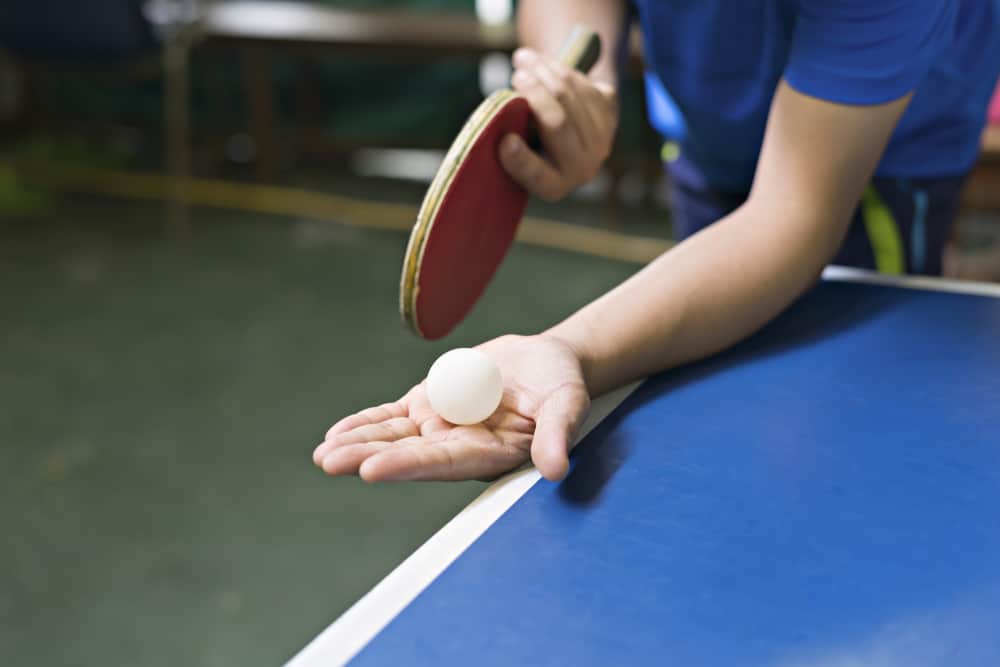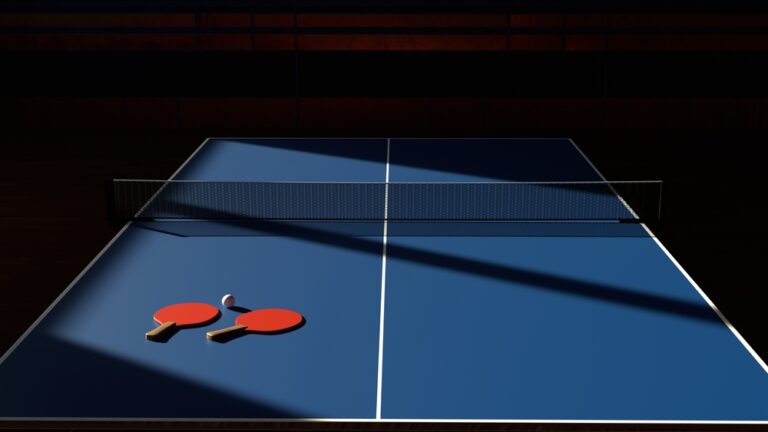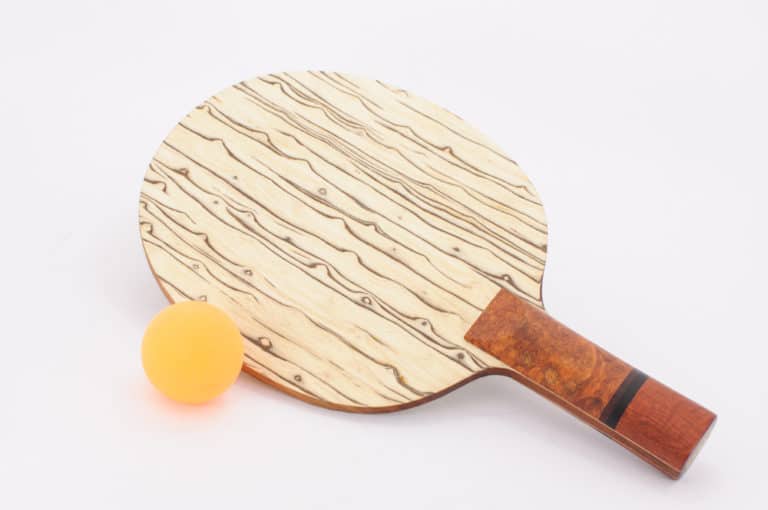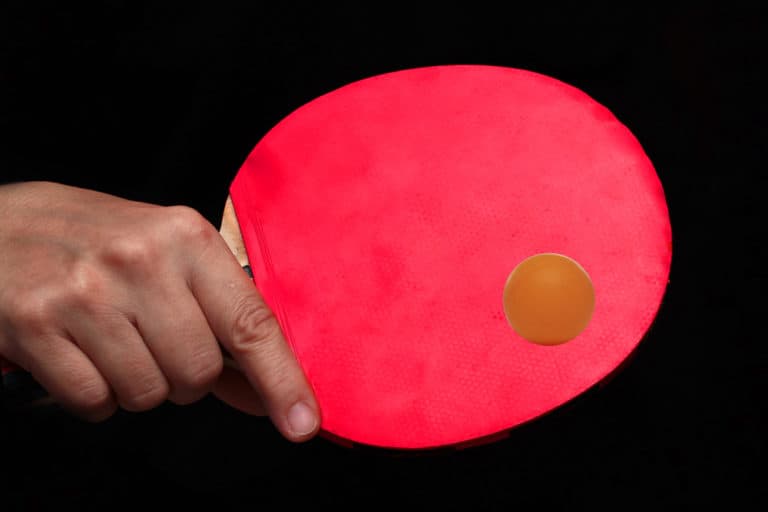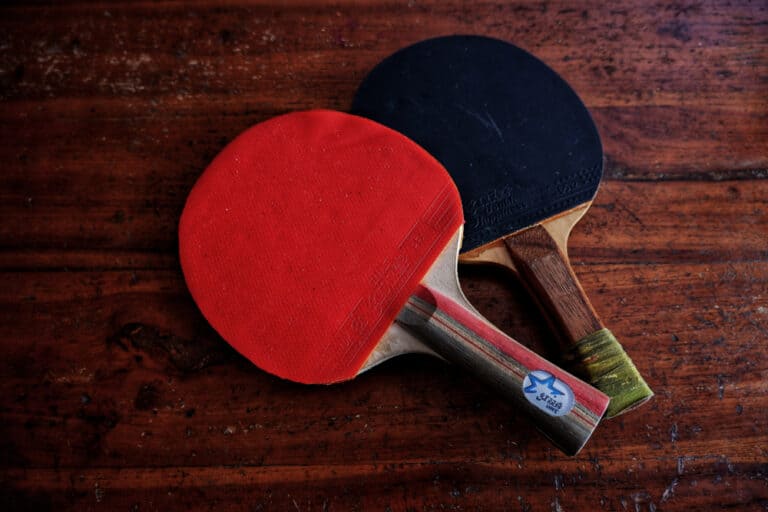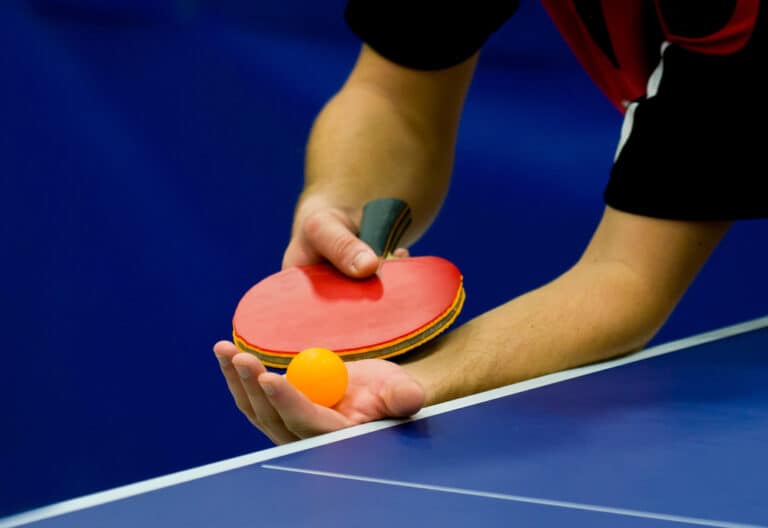Is The White Line Out In Table Tennis?
The white lines on a table tennis table mark the playable area for players. These lines around the table’s edges are 2cm thick, while the middle line is 3mm wide. The middle line is only used in doubles as players must serve to the opposite corners of the opponents’ side of the table. But does hitting this line mean the ball is out?
The entire top surface of the table is considered playable in table tennis. Therefore, the white lines on the table are within bounds. The ball is still considered ‘in’ if it hits an edge causing it to change trajectory. However, it’s considered ‘out’ if the ball touches the side.
Table tennis is a fast-paced game played with a small ball. So, it can be difficult to see whether it lands inside the white line. Whether you’re learning to play or brushing up on your skills, knowing the ‘ins’ and ‘outs’ of table tennis is essential! If you are wondering, this guide will tell you everything you need to know.
Is The Ball In If It Hits The White Line?
In table tennis, the ball may land anywhere on the top of the table. A ball that lands on or within the white border of the table is considered ‘in.’
That includes the white lines around the edges of the table.
The white lines around the edge of a table tennis table help the players see the outline. They demarcate the boundary of the playable area, but they do not have any function other than that. So, when a player hits a ball, and it lands on a white line, it is within the playable area.
Can The Ball Land On The Edge Of The Table?
In table tennis, the ball may often hit the edge of the table and change trajectory. If this happens, it can be confusing when deciding whether the ball is ‘in.’ This shot can be difficult to return as the ball doesn’t bounce up as it usually would. This shot is typically accidental.
Fortunately, this shot is considered ‘in’ in most cases, even though it is technically ‘outside’ the white line. While the white lines outline the entire playing surface, they are not always perfectly aligned. Players should know that regardless of the placement of the white lines, the entire top of the table is usable.
There are rules to decide whether an edge shot is ‘in’ or ‘out.’ Because the vertical sides of the table don’t count, when the ball hits the side of a table, it is ‘out.’ So, deciding who gets the point for an edge shot can be difficult.
The rules of table tennis state that if the ball travels over the table and hits an edge on the opponent’s side, it is ‘in.’ This is because it must travel downward towards the top surface of the table to hit the edge.
On the other hand, sometimes a ball is hit from next to and below the table. When this happens, it is considered ‘out’ if it hits the edge. In this case, the ball would be considered hitting the side of the table, even if it bounces off the edge. However, if the ball moves above the table’s surface and comes down to hit the edge, it is ‘in.’
The ITTF, or International Table Tennis Federation, implemented this ruling to avoid confusion. It was decided that an edge ball would be ‘in’ if it moved over the table first due to gravity.
The White Line In Doubles
In table tennis singles, the middle line does not matter. Players may serve anywhere on the opponent’s side of the table. In doubles, however, players must serve diagonally from their right block to the opponent’s right block. The playable area in a doubles serve is from the white line in the middle to the right edge of the table.
If a ball lands on the middle white line, it’s still considered ‘in.’ This restriction is because teammates stand next to each other at the table. Only the player whose turn it is may receive the ball. It would be challenging to return if players were allowed to serve to either side of the opponents’ half of the table.
After serving, the middle white line no longer plays any part in ruling the point. The players on each team must alternate returning the ball and may hit it anywhere on the opponents’ half. The same rules regarding the white lines apply to doubles. The ball is ‘in’ if it lands on the white line or travels over the table and hits the edge, changing its trajectory.
Hitting The Net Before The White Line
Sometimes the ball can touch the net before bouncing onto the opponent’s side of the table. The players must play on if it happens during a rally. However, a ball that hits the net is tricky to return. It changes trajectory midway, and the receiver must adjust their return.
A ball hitting the net on a serve is called a ‘let.’ Neither player gets the point and must retake the serve when this happens.
If the ping pong ball touches the net on a serve and hits an edge of the opponent’s half of the table, the point also must be retaken. If a ball hits the table’s edge on a serve, it is considered a legal shot, and the point goes to the server.

Conclusion
The white lines on a table tennis table’s edge only outline the table for the players. They have no bearing on the game’s rules, and a ball is still ‘in’ if it lands on a white line. The middle line only applies during a doubles serve, when the ball must land inside the receiver’s right block. The ball may land on the middle line as well.
Edge shots are legal in some instances. For example, if the ball travels over the table and hits the edge, it is considered ‘in.’ A ball that touches the net and hits the edge is also ‘in’ unless it is a serve.

